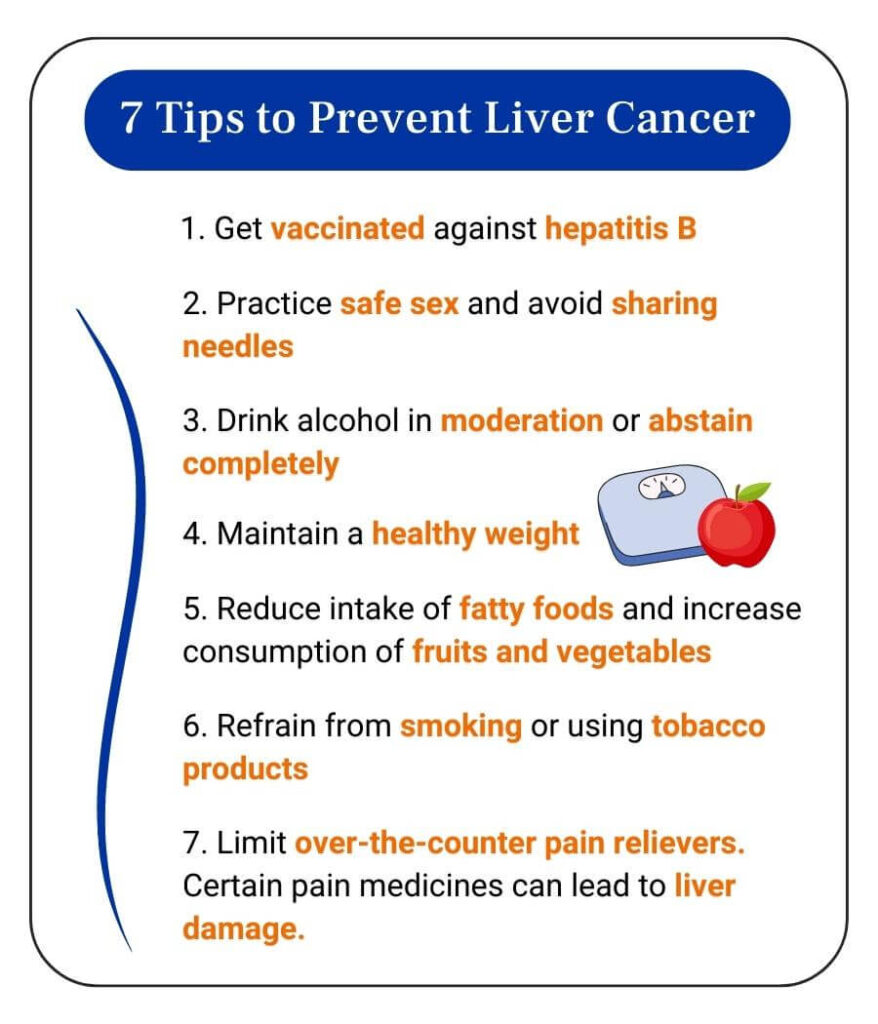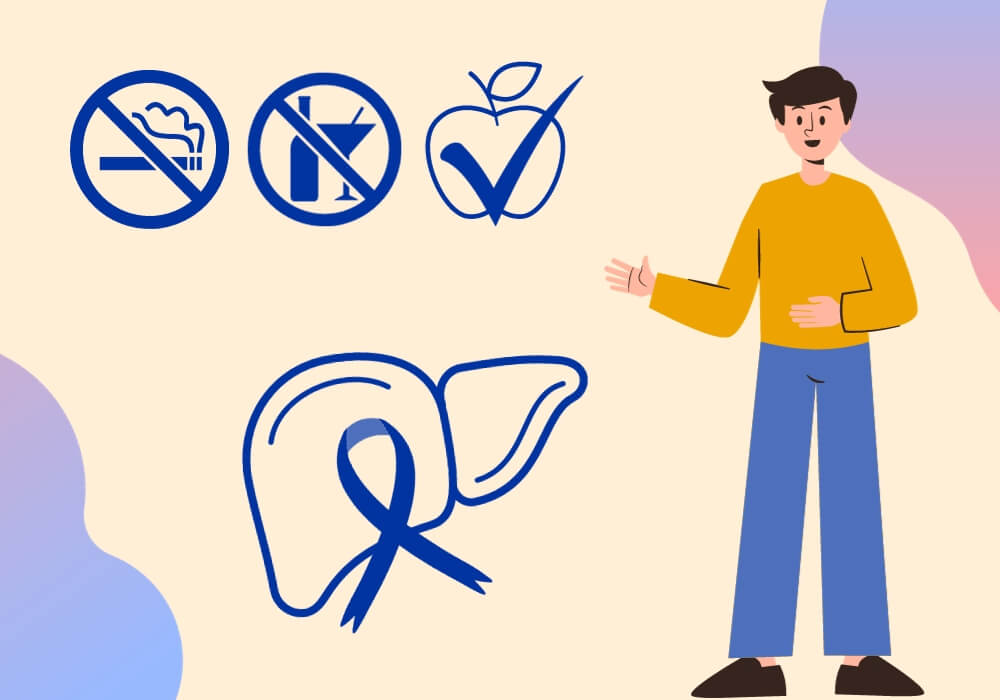Tasked with detoxifying your body, metabolizing nutrients, and producing vital proteins that prevent blood clotting, the liver plays a pivotal role in your daily physiological functions. However, the dark shadow of liver cancer can significantly impair these vital functions, turning your everyday tasks into challenges.
In this article, we’re illuminating the ins and outs of early detection and the helpful prevention strategies you can turn to if liver cancer is knocking on your door. We’ll also dive into the roles that age and sex play in upping your liver cancer odds. By the end, we hope to arm you with the know-how to make this widespread cancer a little less scary.
Unpacking the Enigma of Liver Cancer
We regret to share that liver cancer ranks among the top causes of cancer-related deaths globally, claiming over 700,000 lives each year. This disease takes two main forms: Primary liver cancer, which starts directly in the liver, and Secondary liver cancer, a result of cancer spreading to the liver from another part of the body. Though it settles in the liver, secondary cancer is still named after its point of origin. Here are some of the major types of primary liver cancer:
- Hepatocellular Carcinoma (HCC): Standing as the most prevalent primary liver cancer, this variant originates from hepatocytes, the liver’s primary cells.
- Intrahepatic Cholangiocarcinoma (Bile Duct Cancer): A variant that emerges from the cells that line the liver’s small bile ducts.
- Hepatoblastoma: A rarer type, predominantly affecting children.
- Angiosarcoma and Hemangiosarcoma: These rare types stem from the liver’s blood vessels and are notorious for their rapid progression.
With the significant impact of this disease, you may be curious about the factors fueling it. Let’s unpack the six primary triggers of liver cancer.
Chronic Hepatitis Infections
Both hepatitis B and hepatitis C top the charts as major contributors to liver cancer. The hepatitis B virus causes Chronic Hepatitis B (HBV) and can lead to conditions linked to liver cancer. Meanwhile, Hepatitis C (HCV)–originating from the hepatitis C virus–often leads to a silent, chronic infection that gradually leads to serious liver complications.
Cirrhosis
Cirrhosis is irreversible and progressive scarring of the liver. It’s frequently a result of heavy drinking, fatty liver complications, or long-standing issues with hepatitis. As it advances, scar tissue gradually replaces healthy liver tissue, hampering blood flow and the liver’s performance. In a short amount of time, your liver starts to look bumpy and undersized.
Nonalcoholic Fatty Liver Disease
Nonalcoholic Fatty Liver Disease happens when there’s too much fat accumulating in the liver. This can cause the liver to get inflamed, scarred, and sometimes even stop working. Not surprisingly, Nonalcoholic Fatty Liver Disease is commonly found in individuals with obesity and diabetes.
Toxins, Tabacco, and Alcohol
Ever wonder about the risks of snacking on moldy foods? The culprits are aflatoxins, toxins produced by molds found on corn, grains, and peanuts that can harm liver cells and trigger genetic mutations. Chemicals lurking in some pesticides and herbicides can also spell trouble for the liver. And despite being the life of the party, alcohol and tobacco can introduce harmful carcinogenic compounds into your system, damaging liver cells and raising the risk of liver cancer.
Inherited Liver Diseases
Did you know that genetic quirks like hemochromatosis, which floods the body with excess iron, can nudge you toward liver cancer? Similarly, Wilson’s disease, which causes copper to accumulate in the liver, can also increase your risk.
What’s the Connection Between Liver Cancer and Age?
Age isn’t just a tally of years; it’s closely linked to the risk of liver cancer, with the highest diagnoses seen among those in their 60s and 70s. The reason? With more years under one’s belt, there’s an increased chance of encountering risk factors linked to liver cancer. Even some unsuspecting habits, like the prolonged use of certain pain medicines, can be a silent saboteur to the liver.
As the years go by, cells become more susceptible to DNA damage, whether from environmental hazards or mere replication mistakes. Our internal repair mechanisms aren’t as efficient as they used to be, resulting in accumulated cellular damage and promoting mutations that trigger uncontrolled cell growth. Despite the liver’s remarkable regenerative abilities, continuous stressors, such as hepatitis or chronic alcohol use, can surpass its healing powers, causing conditions like cirrhosis. Coupled with aging is the rise of chronic inflammation and a dampened immune response, further elevating the liver cancer risk.
Which Sex Does Liver Cancer Affect Most?
Did you know that men are more likely to develop liver cancer than women? One reason is the higher consumption of alcohol and tobacco among men. Additionally, many jobs historically held by men expose them to chemicals or toxins that increase their liver cancer risk, like vinyl chloride and some pesticides. Meanwhile, ladies typically lean more towards healthier eating and are generally more proactive about managing their weight–both habits that can reduce your risk of liver cancer.
Genetics also play a big part in determining your liver cancer risk. Some research suggests that women might have a leg up in the genetics department because of their two X chromosomes. This double X-factor can act as a sort of backup: if one X chromosome has a liver cancer-linked mutation, the other could offer protection. Estrogen also appears to defend against liver cancer, with certain gene variations in estrogen receptors amplifying this effect. On the other hand, androgens—the male hormones—can elevate liver cancer risk by influencing unhealthy liver cell growth, promoting tumor pathways, and causing chronic inflammation.
Liver Cancer 101: Symptoms, Prevention, and Targeted Treatment
Liver cancer manifests with persistent pain in the upper belly or back, a noticeable bulge under the ribs, jaundice, bloating, easy bleeding, nausea, and changes in bowel movements and urine. The disease can lead to fatigue, appetite loss, weight drop, digestive tract issues, hormonal imbalances, and mental and social challenges. Heavy drinkers, tobacco users, older men, and those with conditions like Chronic Hepatitis, Cirrhosis, or diabetes are at increased risk and should undergo regular health screenings, especially if they’re experiencing any of the previously mentioned symptoms.

Want to keep your liver healthy? Then consider getting the hepatitis B vaccine, which can do wonders for your liver health. Monitor your alcohol intake or consider skipping it altogether, and prioritize staying in shape. Opt for fruits and veggies instead of junk food. Quit smoking, and be cautious with over-the-counter pain medications as some can be tough on your liver, especially with prolonged use.
If you or someone you know is diagnosed with liver cancer, several treatment options are available. While they come with their risks, surgeries such as chemotherapy, hepatectomy, and liver transplant are common approaches, as is radiation therapy. Apart from these common treatments, methods like ablation therapy, embolization therapy, and immunotherapy have proven effective.
There are various targeted therapies and drugs available to help treat liver cancer, including Sorafenib, Lenvatinib, Regorafenib, and Cabozantinib. The combined use of Atezolizumab and Bevacizumab has also demonstrated potential in treating liver cancer. So, while dealing with liver issues can be challenging, there are pathways to hope and potential cures.
Evaluate Your Risk, Embrace Prevention
Today, we’ve journeyed through the complexities of liver cancer, emphasizing the profound influence of age and gender on its risks. We’ve discovered that belonging to a high-risk group underscores the importance of routine screenings. Fortunately, you’re not on this journey alone. Lean on trusted healthcare experts to provide tailored advice and vital screenings. Your health is paramount—make it a priority and act now!
